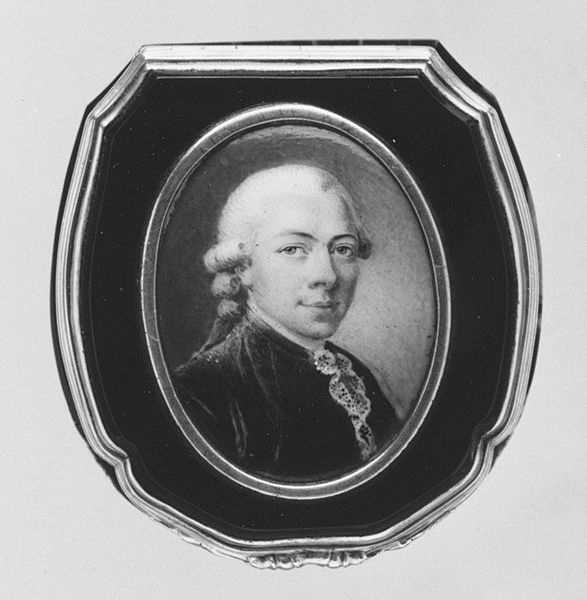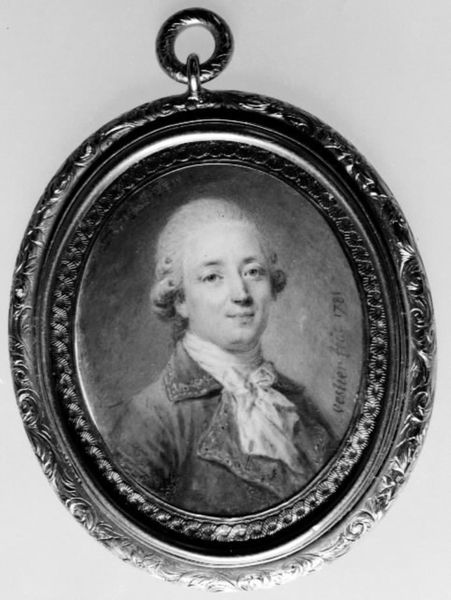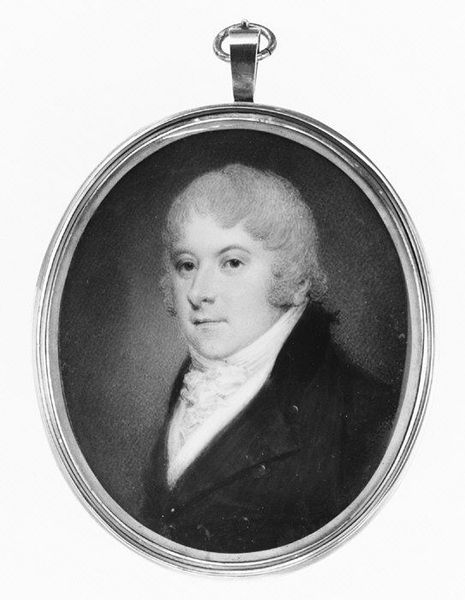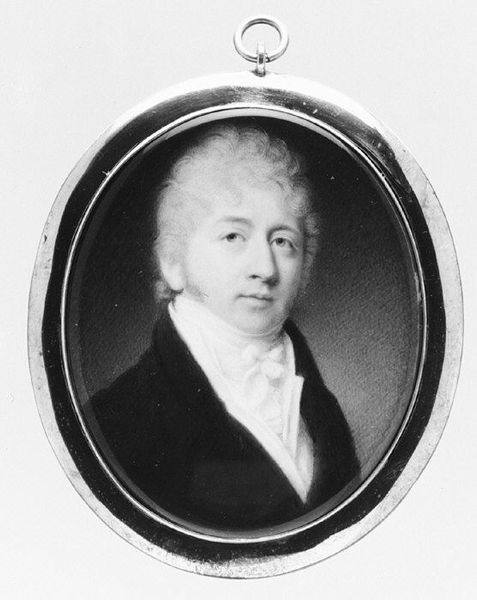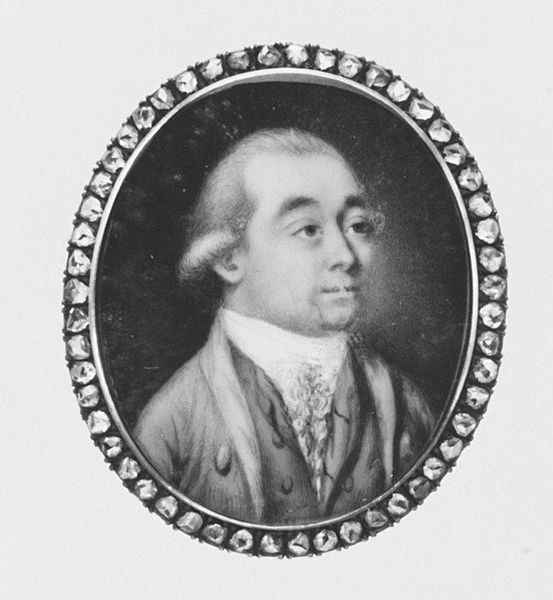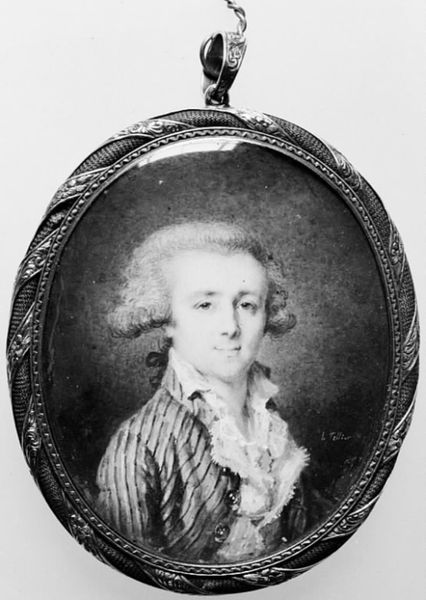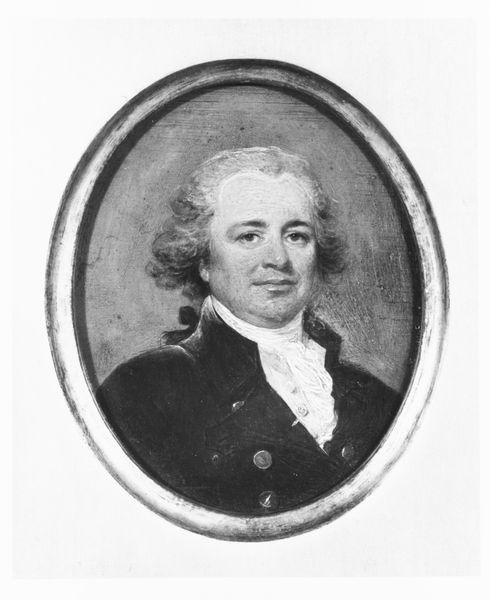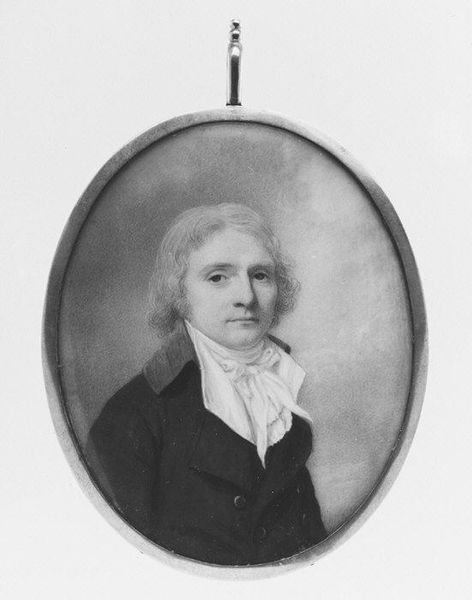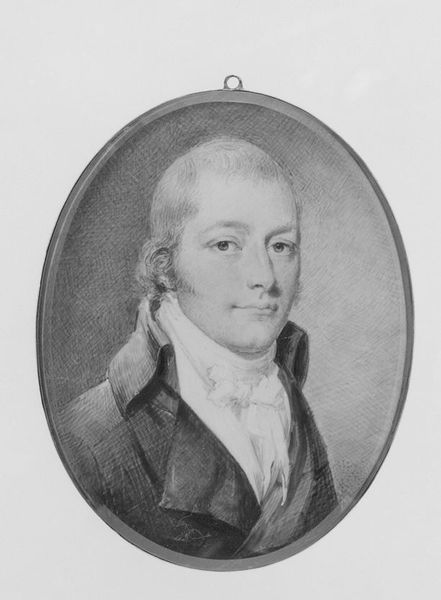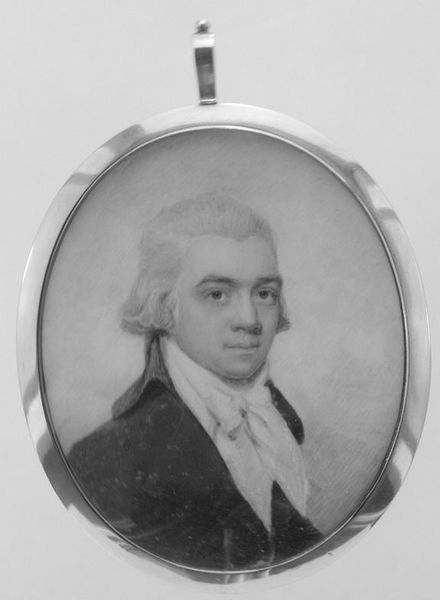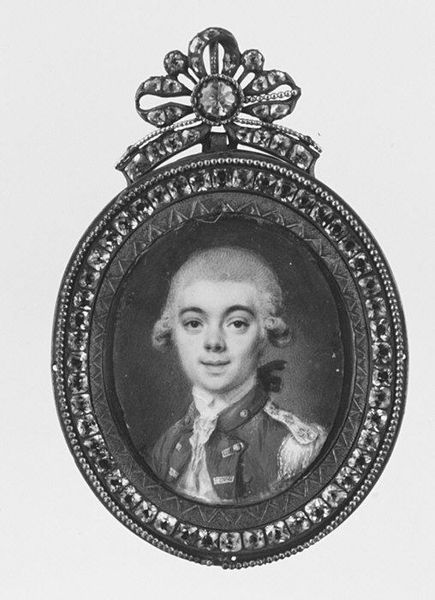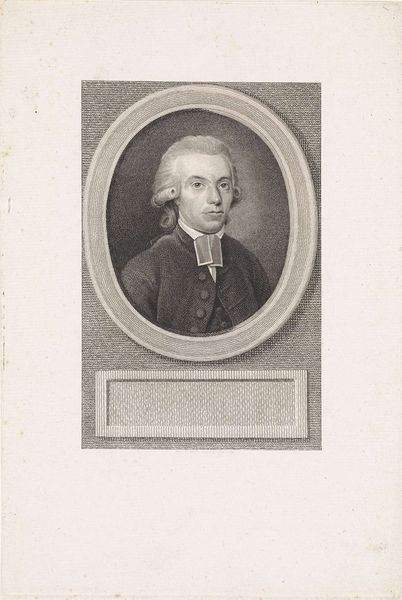
drawing
#
portrait
#
drawing
#
black and white
#
rococo
Dimensions: Oval, 1 7/8 x 1 1/2 in. (49 x 37 mm)
Copyright: Public Domain
Editor: Here we have Johann Esaias Nilson's "Portrait of a Man," created sometime between 1741 and 1788. It's a delicate drawing, and it gives me the sense of carefully preserved history. What can you tell me about this piece? Curator: This intimate portrait invites us to consider the sitter's social standing and perhaps even the power dynamics inherent in portraiture of the time. How does the sitter's clothing – the meticulously rendered waistcoat and jacket – contribute to your understanding of his identity? Editor: They suggest a certain level of formality and wealth, I think. Someone who was part of the establishment. Curator: Exactly. Nilson was working during the Rococo period. Consider how Rococo aesthetics, often associated with aristocratic indulgence, might intersect with prevailing social inequalities. How might the seemingly innocuous elegance of this portrait reinforce existing class structures? Editor: So, it's not just a portrait, but a statement about social hierarchy? Curator: Precisely. Think about who had the privilege of having their portrait made at that time, and who didn’t. This artwork, like many from that era, can be viewed as a subtle document of power and exclusion. What are your thoughts on that? Editor: It makes me think about representation – who gets seen and remembered, and how art can play a role in either challenging or reinforcing those dynamics. I’ll never look at portraits the same way! Curator: And that is the beauty of art; it allows us to explore beyond the aesthetic and dive deep into societal complexities.
Comments
No comments
Be the first to comment and join the conversation on the ultimate creative platform.
